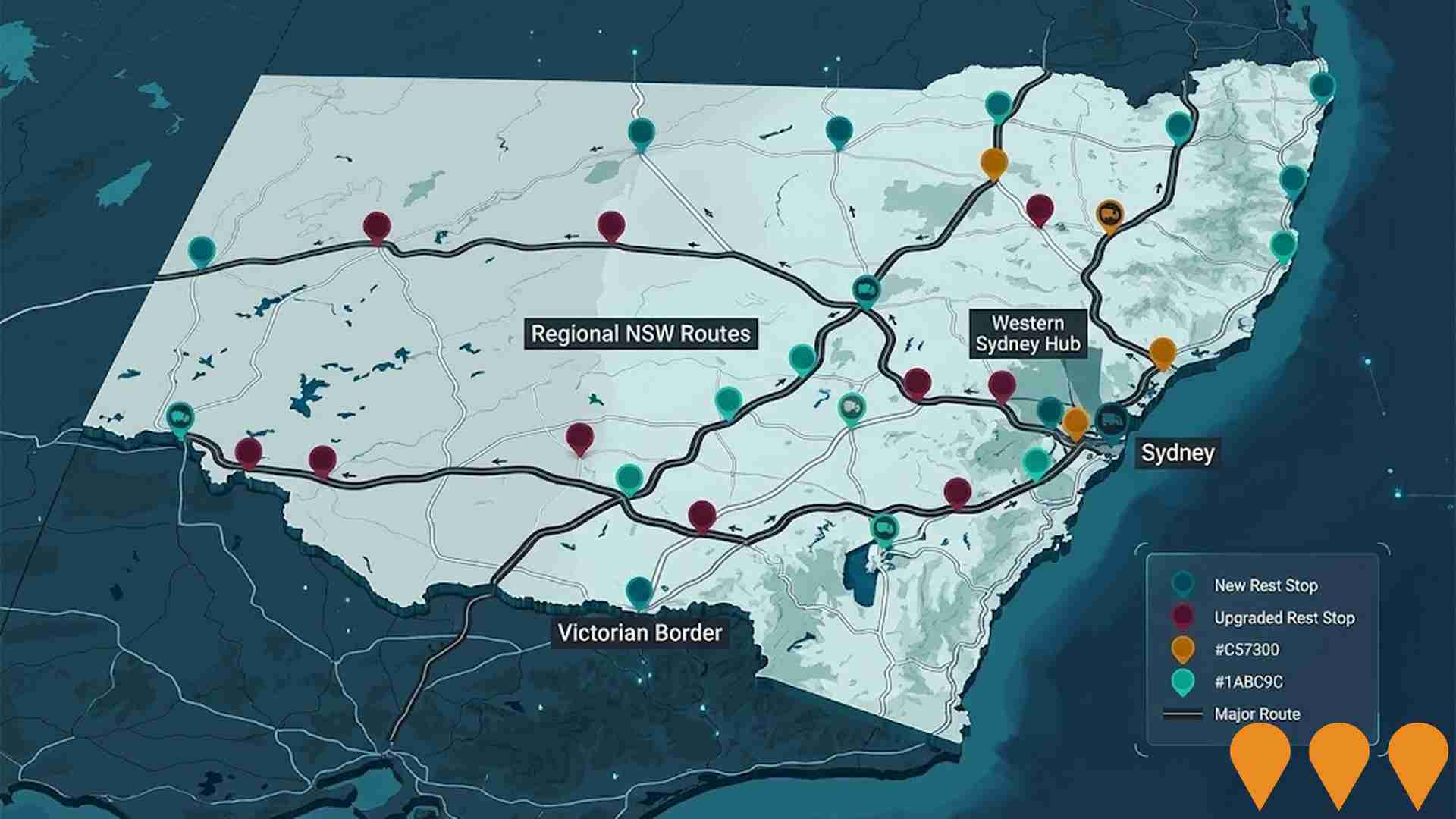Chart Color Schemes
est. as @ -- *
ABS ERP | -- people | --
2021 Census | -- people
Sales Activity
Curious about local property values? Filter the chart to assess the volume and appreciation (including resales) trends and regional comparisons, or scroll to the map below view this information at an individual property level.
Find a Recent Sale
Sales Detail
Population
Strathnairn lies within the top quartile of areas nationally for population growth performance according to AreaSearch analysis of recent, and medium to long-term trends
Strathnairn's population is around 1,984 as of Aug 2025. This reflects an increase of 1,270 people since the 2021 Census, which reported a population of 714 people. The change is inferred from the estimated resident population of 1,915 from the ABS in June 2024 and an additional 160 validated new addresses since the Census date. This level of population equates to a density ratio of 472 persons per square kilometer. Strathnairn's growth of 177.9% since the 2021 census exceeded that of the SA3 area (2.4%) and the state, marking it as a growth leader in the region. Population growth was primarily driven by interstate migration contributing approximately 90.5% of overall population gains during recent periods.
AreaSearch is adopting ABS/Geoscience Australia projections for each SA2 area, released in 2024 with 2022 as the base year. For areas not covered and years post-2032, age group growth rates from the ACT Government's SA2 area projections are adopted, also based on 2022. Future population dynamics predict exceptional growth, placing Strathnairn in the top 10 percent of national areas, with an expected increase of 3,896 persons to 2041 based on the latest numbers, reflecting a total increase of 192.9% over the 17 years.
Frequently Asked Questions - Population
Development
The level of residential development activity in Strathnairn was found to be higher than 90% of real estate markets across the country
Strathnairn has received approximately 152 dwelling approvals per year over the past five financial years, totalling 761 homes. As of FY-26, 7 approvals have been recorded. On average, each dwelling accommodates around 2.3 new residents annually between FY-21 and FY-25, reflecting strong demand that supports property values.
The average construction cost for these dwellings is $326,000. Compared to the Australian Capital Territory, Strathnairn has seen a significant increase of 8870.0% in building activity per person, offering buyers more choices. However, recent construction activity has decreased slightly. This high level of developer confidence in Strathnairn is evident as it exceeds national averages. Recent construction comprises 63.0% standalone homes and 37.0% medium to high-density housing, indicating a shift from the area's current housing composition of 84.0% houses. With around 79 people per approval, Strathnairn is developing rapidly.
Future projections suggest that by 2041, Strathnairn will add approximately 3,827 residents. Given current construction levels, housing supply should meet demand adequately, creating favorable conditions for buyers while potentially enabling population growth to exceed current forecasts.
Frequently Asked Questions - Development
Infrastructure
Strathnairn has emerging levels of nearby infrastructure activity, ranking in the 20thth percentile nationally
Changes to local infrastructure significantly impact an area's performance. AreaSearch has identified a single project likely to affect this area: Territory Battery, Lower Molonglo Water Quality Control Centre Upgrades, Parkwood Urban Release, and Ginninderry Estate - Stages 4-7 (Strathnairn & future Macnamara) are key projects. The following details those most relevant.
Professional plan users can use the search below to filter and access additional projects.
INFRASTRUCTURE SEARCH
 Denotes AI-based impression for illustrative purposes only, not to be taken as definitive under any circumstances. Please follow links and conduct other investigations from the project's source for actual imagery. Developers and project owners wishing us to use original imagery please Contact Us and we will do so.
Denotes AI-based impression for illustrative purposes only, not to be taken as definitive under any circumstances. Please follow links and conduct other investigations from the project's source for actual imagery. Developers and project owners wishing us to use original imagery please Contact Us and we will do so.
Frequently Asked Questions - Infrastructure
Low and Mid-Rise Housing Policy
State-wide NSW planning reforms via amendments to the State Environmental Planning Policy to enable more diverse low and mid-rise housing (dual occupancies, terraces, townhouses, manor houses and residential flat buildings up to 6 storeys) in well-located areas within 800 m of selected train, metro and light-rail stations and town centres. Stage 1 (dual occupancies in R2 zones statewide) commenced 1 July 2024. Stage 2 (mid-rise apartments, terraces and dual occupancies near stations) commenced 28 February 2025. Expected to facilitate up to 112,000 additional homes over the next five years.
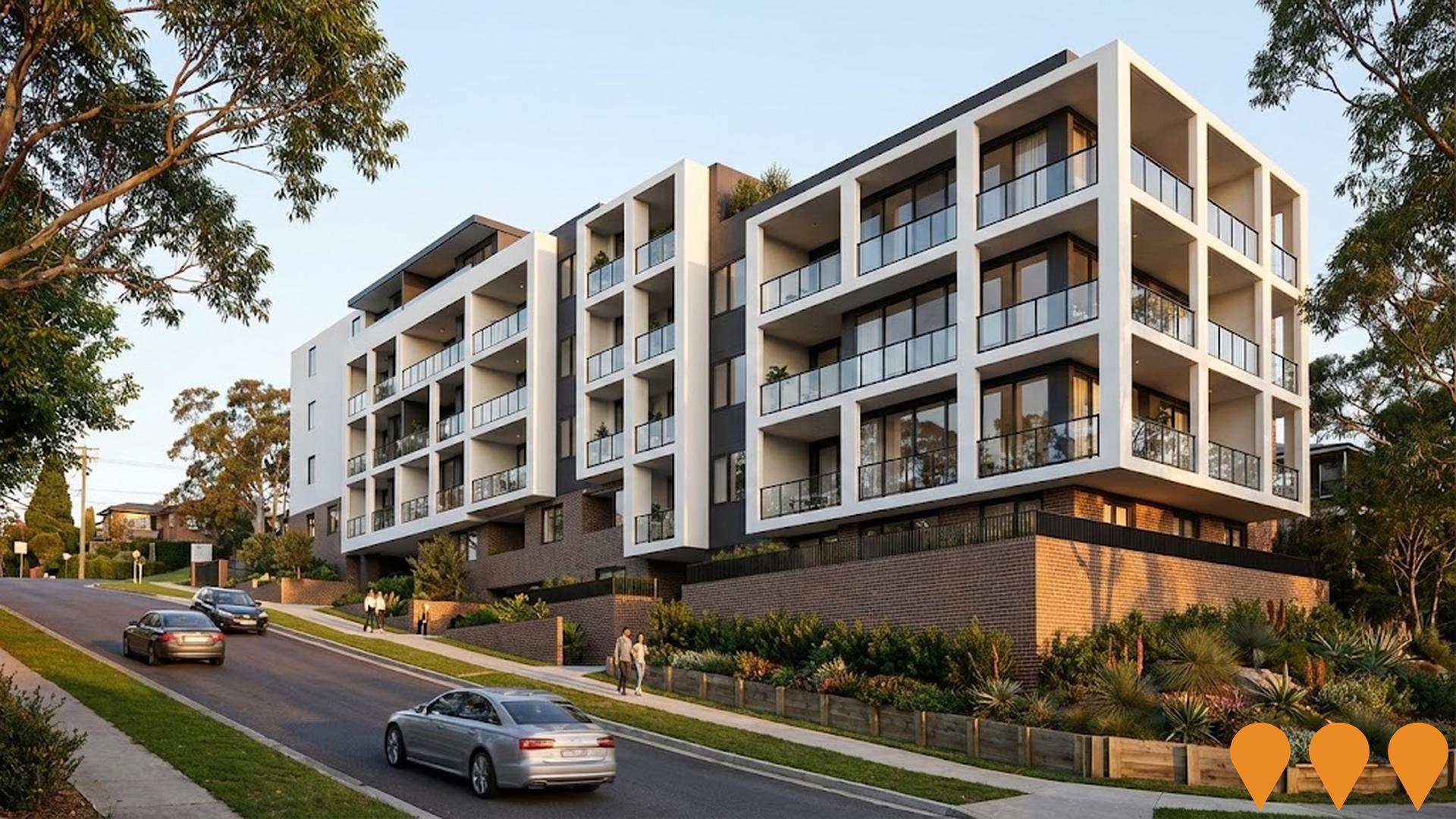
Lower Molonglo Water Quality Control Centre Upgrades
Icon Water is upgrading the secondary treatment process at the Lower Molonglo Water Quality Control Centre (LMWQCC) by delivering a new membrane bioreactor (MBR) treatment line (up to 97 ML/day) and associated pre-treatment screening, grit removal, chemical dosing and non-potable systems, with staged conversion of existing bioreactors to MBR technology. A Seymour Whyte - VINCI joint venture is delivering stage one under a design and construct arrangement, with Beca HunterH2O as design partner. Construction is scheduled across 2025-2028.
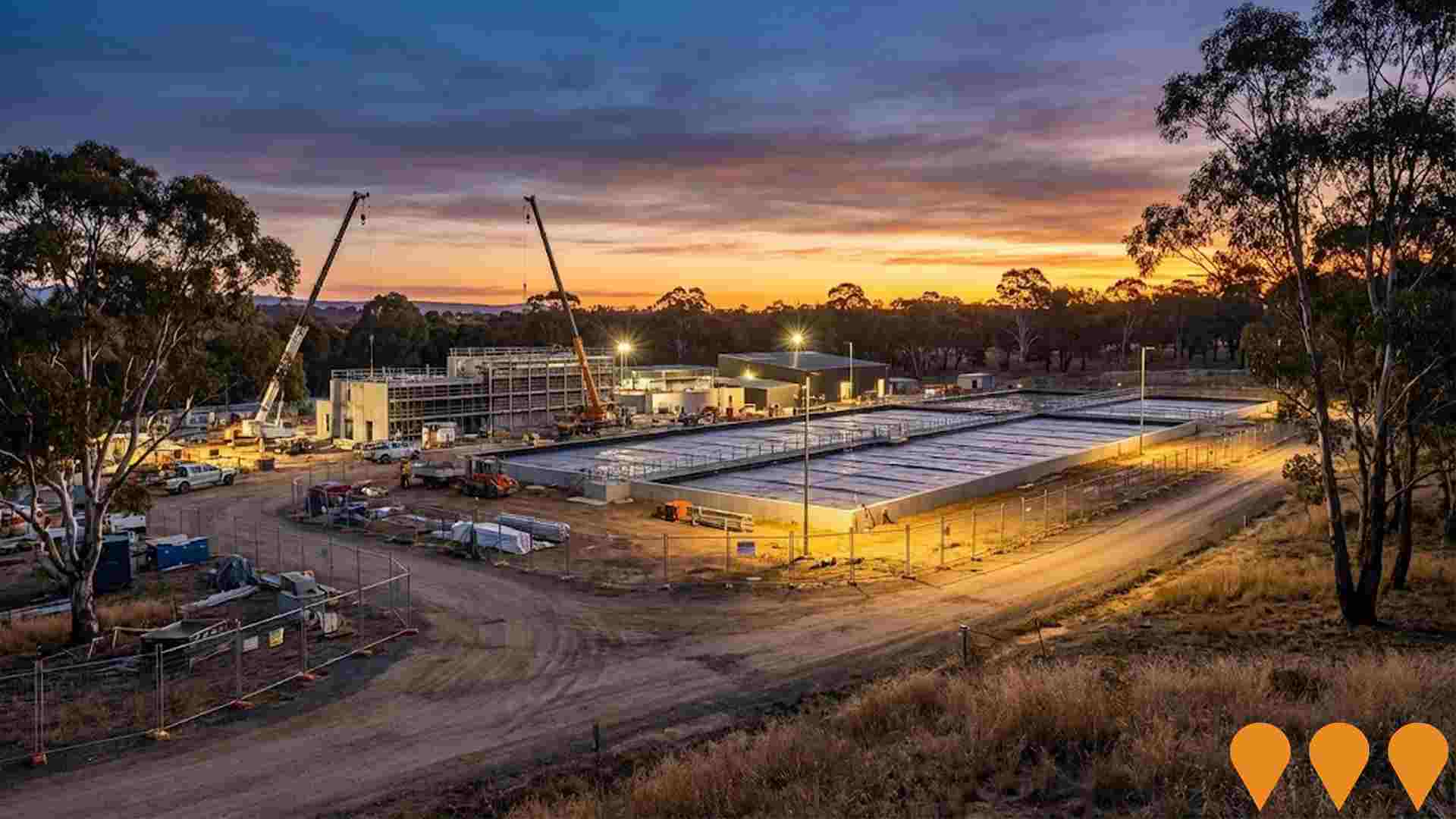
Ginninderry Estate - Stages 4-7 (Strathnairn & future Macnamara)
Canberra's largest master-planned community spanning the ACT-NSW border, delivering approximately 11,500 dwellings total, with ongoing stages immediately adjacent to and west of Dunlop.
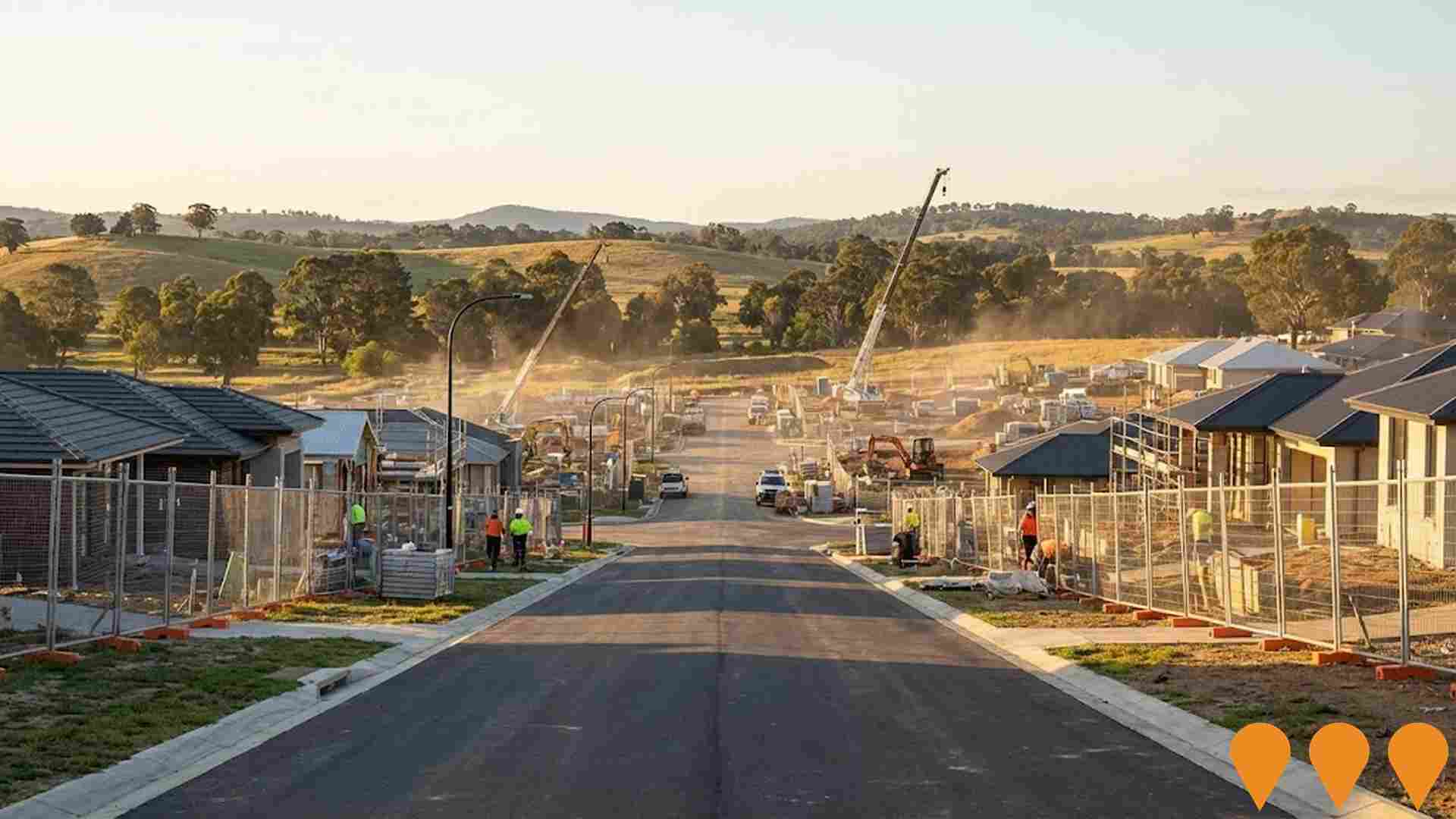
HumeLink
HumeLink is a new 500kV transmission line project connecting Wagga Wagga, Bannaby, and Maragle, spanning approximately 365 km. It includes new or upgraded infrastructure at four locations and aims to enhance the reliability and sustainability of the national electricity grid by increasing the integration of renewable energy sources such as wind and solar.
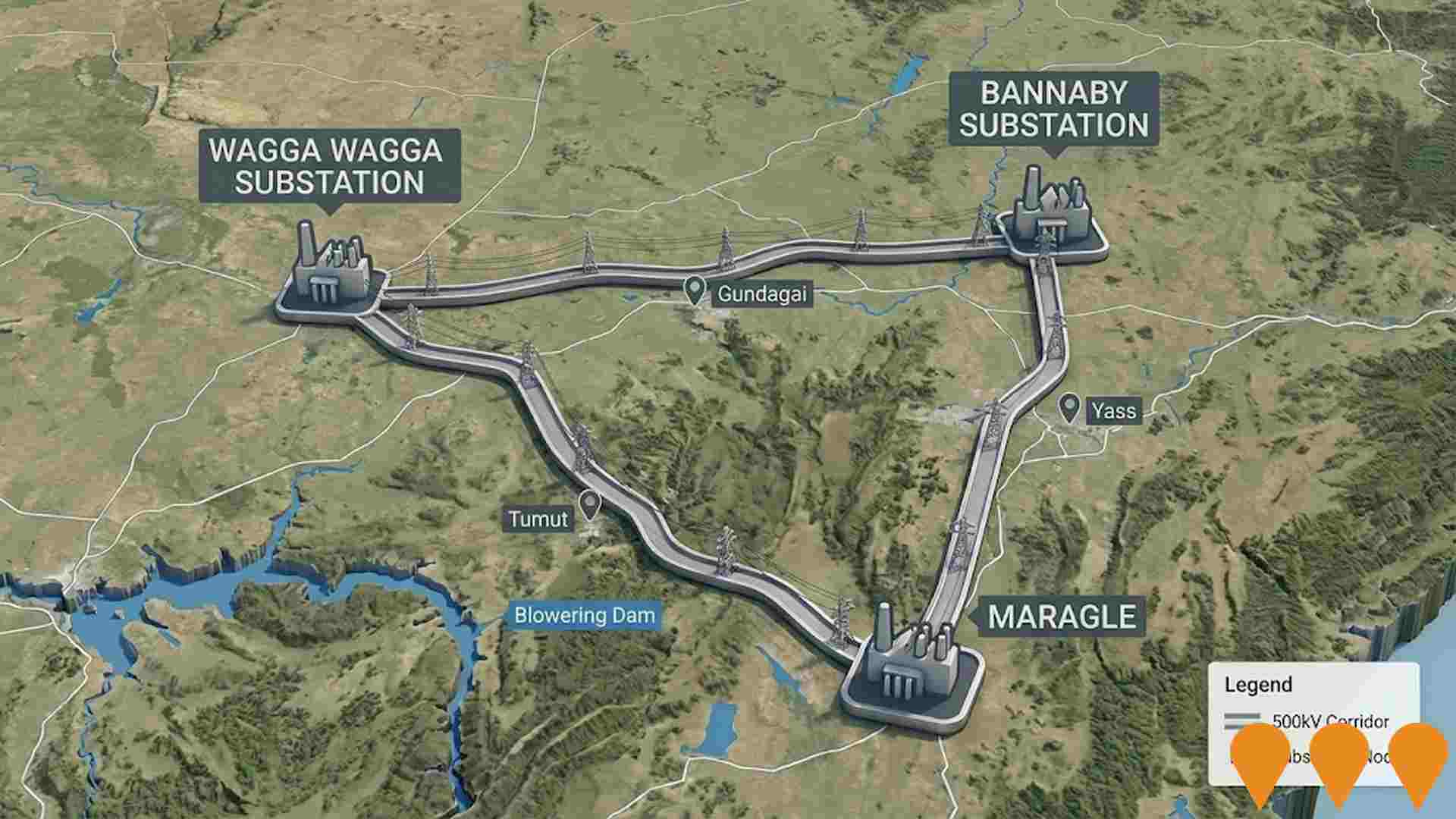
Territory Battery
A stand-alone battery energy storage system of up to 300 MW / 600 MWh adjacent to Stockdill Substation in Belconnen. It will store up to 2 hours of energy and dispatch during peak demand to support grid stability for the ACT.

Queanbeyan Regional Integrated Transport Plan
Comprehensive transport planning initiative with 64 key actions for next 10 years. Addresses road safety, active transport connectivity, public transport availability, and future transport needs. Improved connections between Queanbeyan and ACT.
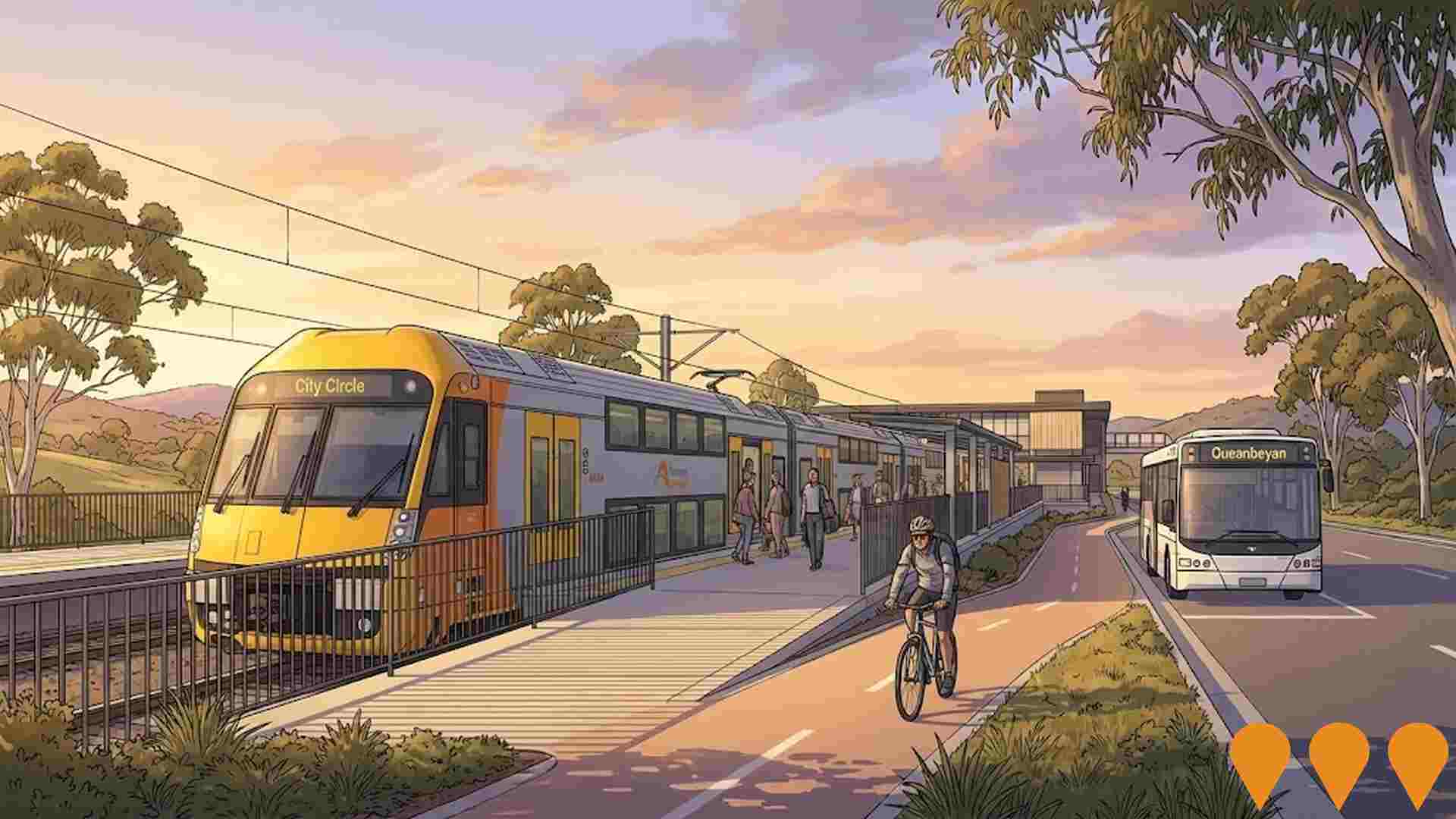
Big Canberra Battery (Williamsdale BESS)
A 250 MW / 500 MWh battery energy storage system at Williamsdale in southern Canberra, delivered by Eku Energy as Stream 1 of the ACT Government's Big Canberra Battery. Construction commenced in November 2024 with partners CPP and Tesla supplying Megapack systems. The asset will connect to Evoenergy's 132 kV network near the Williamsdale substation to provide two hours of dispatchable power, grid services and reliability for the ACT. Target operations in 2026.
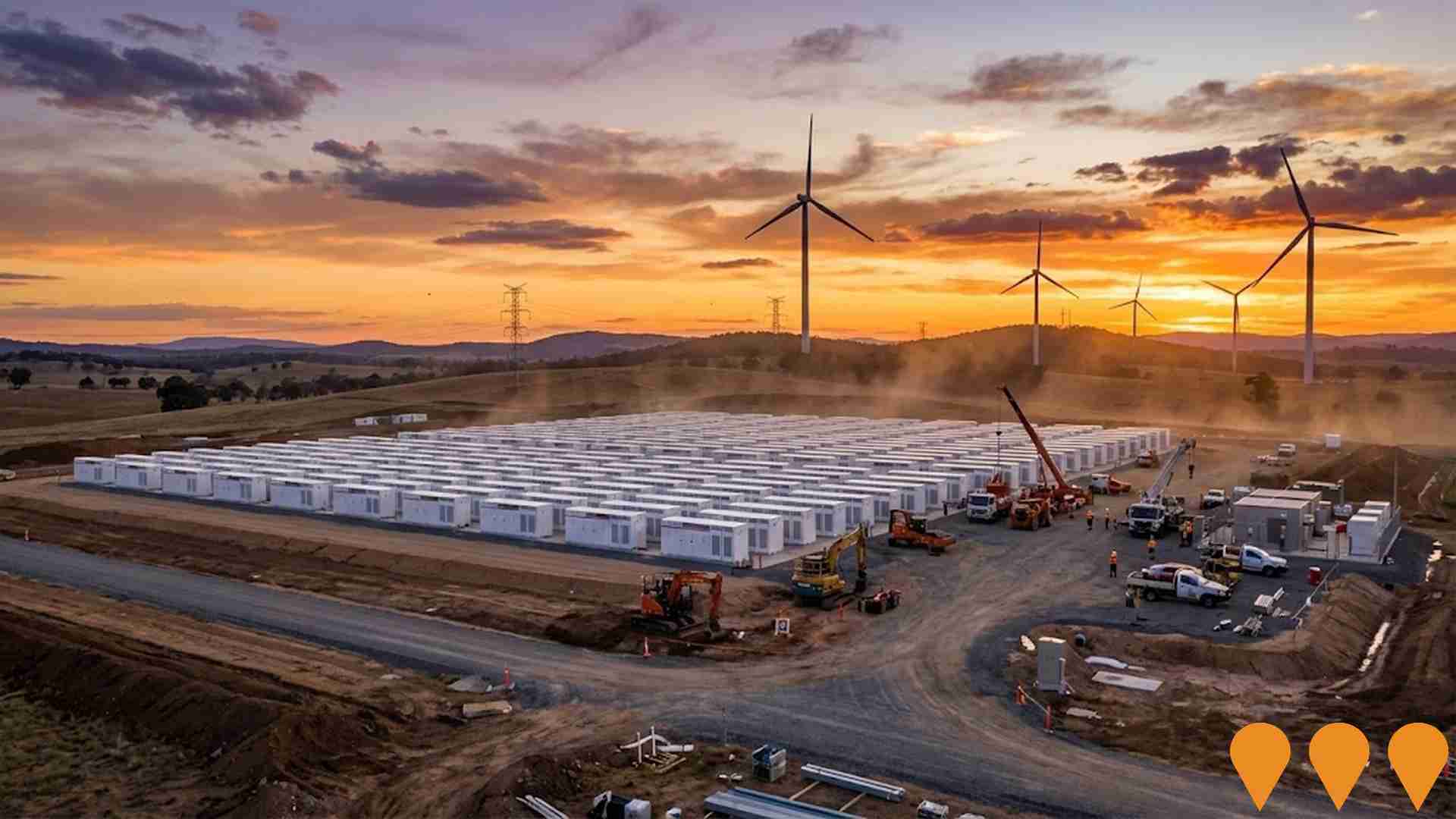
Regional Housing Fund (Victoria)
A $1 billion Homes Victoria program delivering around 1,300 new social and affordable homes across at least 30 regional and rural LGAs, using a mix of new builds, purchases in new developments, renewals and refurbishments. Delivery commenced in late 2023 with early completions recorded; overall fund completion is targeted for 2028.

Employment
AreaSearch assessment positions Strathnairn ahead of most Australian regions for employment performance
Strathnairn has a highly educated workforce with professional services well represented. Its unemployment rate was 3.2% in the past year, with an estimated employment growth of 3.0%.
As of June 2025982 residents are employed, with an unemployment rate of 0.3% below the Australian Capital Territory's rate of 3.4%, and workforce participation at 83.2% compared to the region's 69.6%. Leading employment industries among residents include health care & social assistance, public administration & safety, and professional & technical services. The area specializes in health care & social assistance with an employment share of 1.7 times the regional level, while public administration & safety has limited presence at 20.1% compared to the regional average of 30.4%. Over a 12-month period ending June 2025, employment increased by 3.0%, labour force grew by 1.6%, and unemployment fell by 1.4 percentage points.
In comparison, Australian Capital Territory recorded employment growth of 1.9%, labour force growth of 1.6%, with unemployment falling by 0.3 percentage points. Jobs and Skills Australia's national employment forecasts from May 2025 project a 6.6% expansion over five years and 13.7% over ten years. Applying these projections to Strathnairn's employment mix suggests local growth of approximately 7.3% over five years and 14.7% over ten years, though these are simple extrapolations for illustrative purposes only.
Frequently Asked Questions - Employment
Income
The economic profile demonstrates exceptional strength, placing the area among the top 10% nationally based on comprehensive AreaSearch income analysis
AreaSearch's latest postcode level ATO data for financial year ending June 2022 shows that median income in Strathnairn is $72,536 and average income stands at $81,992. This contrasts with Australian Capital Territory's figures of a median income of $68,678 and an average income of $83,634. Based on Wage Price Index growth of 13.6% from financial year ending June 2022 to September 2025, estimated current median income is approximately $82,401 and average income is around $93,143. According to Australian Bureau of Statistics Census data for 2021, Strathnairn's incomes rank highly nationally, with household, family, and personal incomes all between the 93rd and 93rd percentiles. Income distribution shows that 50.2% of locals (995 people) fall into the $1,500 - $2,999 category, similar to metropolitan regions where 34.3% occupy this range. Strathnairn's affluence is evident with 41.0% earning over $3,000 per week, supporting premium retail and service offerings. High housing costs consume 17.7% of income, but strong earnings place disposable income at the 91st percentile nationally. The area's SEIFA income ranking places it in the 9th decile.
Frequently Asked Questions - Income
Housing
Strathnairn is characterized by a predominantly suburban housing profile, with ownership patterns similar to the broader region
In Strathnairn, as per the latest Census, 83.6% of dwellings were houses while 16.4% comprised semi-detached homes, apartments, and other types. This contrasts with the Australian Capital Territory's figures of 69.4% houses and 30.5% other dwellings. Home ownership in Strathnairn stood at 8.1%, with mortgaged properties at 86.4% and rented ones at 5.5%. The median monthly mortgage repayment was $2,191, surpassing the Australian Capital Territory average of $2,000. Weekly rent in Strathnairn was $515, higher than the Australian Capital Territory's $430. Nationally, Strathnairn's mortgage repayments were significantly higher than the Australian average of $1,863, and rents were substantially above the national figure of $375.
Frequently Asked Questions - Housing
Household Composition
Strathnairn features high concentrations of family households, with a higher-than-average median household size
Family households account for 78.2% of all households, including 43.1% couples with children, 27.6% couples without children, and 7.1% single parent families. Non-family households make up the remaining 21.8%, with lone person households at 18.4% and group households comprising 3.3%. The median household size is 2.9 people, larger than the Australian Capital Territory average of 2.5.
Frequently Asked Questions - Households
Local Schools & Education
Educational achievement in Strathnairn places it within the top 10% nationally, reflecting strong academic performance and high qualification levels across the community
Educational attainment in Strathnairn is notably high, with 52.0% of residents aged 15+ having university qualifications compared to 30.4% nationally and 43.8% in the SA3 area. Bachelor degrees are most common at 27.3%, followed by postgraduate qualifications (21.0%) and graduate diplomas (3.7%). Vocational credentials are also prevalent, with 28.6% of residents aged 15+ holding such qualifications - advanced diplomas (14.1%) and certificates (14.5%). Educational participation is high, with 34.2% currently enrolled in formal education, including 11.1% in tertiary, 10.0% in primary, and 4.8% in secondary education.
Strathnairn School provides local educational services within Strathnairn but has no current enrollments. The school focuses exclusively on primary education, with secondary options available in nearby areas. Residents must travel to neighboring regions for educational services as there are no schools located within Strathnairn itself. Note: where schools show 'n/a' for enrolments, please refer to the parent campus.
Frequently Asked Questions - Education
Schools Detail
Nearby Services & Amenities
Transport
Transport servicing is low compared to other areas nationally based on assessment of service frequency, route connectivity and accessibility
Transport analysis indicates five active public transport stops operating within Strathnairn as of January 2023. These stops offer a mix of bus services, with one individual route serving the area collectively providing 209 weekly passenger trips. Transport accessibility is rated good, with residents typically located 292 meters from the nearest stop.
Service frequency averages 29 trips per day across all routes, equating to approximately 41 weekly trips per individual stop as of January 2023.
Frequently Asked Questions - Transport
Transport Stops Detail
Health
Strathnairn's residents boast exceedingly positive health performance metrics with very low prevalence of common health conditions across all age groups
Strathnairn's health outcomes show exceptional results across all age groups, with a very low prevalence of common health conditions. Approximately 61% (1,206 people) have private health cover, higher than the Australian Capital Territory average of 57.1%, and the national average of 55.3%. Mental health issues affect 7.7% of residents, while asthma impacts 5.4%.
A total of 81.2% declare themselves completely clear of medical ailments, compared to 68.1% in the Australian Capital Territory. As of 01-01-20XX, Strathnairn has 3.2% (62 people) residents aged 65 and over, lower than the 15.3% in the Australian Capital Territory. Despite this, health outcomes among seniors are strong and broadly align with the general population's health profile.
Frequently Asked Questions - Health
Cultural Diversity
Strathnairn is among the most culturally diverse areas in the country based on AreaSearch assessment of a range of language and cultural background related metrics
Strathnairn has a population where 55.8% speak languages other than English at home, with 51.5% born overseas. The predominant religion is Christianity, comprising 38.3%. The category 'Other' in religion is notably high at 9.6%, compared to the Australian Capital Territory average of 1.3%.
In terms of ancestry, 'Other' is highest at 31.3%, exceeding the regional average of 12.0%. 'Australian' ancestry stands at 16.2%, lower than the regional average of 23.8%. 'English' ancestry is also lower at 14.1%, compared to a regional average of 23.7%. Certain ethnic groups show notable differences: Sri Lankan at 2.3% (regional average 0.3%), Russian at 1.1% (regional average 0.3%), and Filipino at 4.8% (regional average 1.2%).
Frequently Asked Questions - Diversity
Age
Strathnairn hosts a very young demographic, ranking in the bottom 10% of areas nationwide
Strathnairn has a median age of 31, which is younger than the Australian Capital Territory's figure of 35 and substantially under the Australian median of 38. Compared to the Australian Capital Territory, Strathnairn has a higher concentration of residents aged 25-34 (27.5%), but fewer residents aged 55-64 (4.1%). This concentration of 25-34 year-olds is well above the national figure of 14.5%. Between 2021 and the present, the 5 to 14 age group has grown from 13.0% to 17.1%, while the 45 to 54 cohort increased from 7.9% to 9.5%. Conversely, the 35 to 44 cohort has declined from 21.8% to 19.3%, and the 0 to 4 group dropped from 11.6% to 9.6%. Looking ahead to 2041, demographic projections indicate significant shifts in Strathnairn's age structure, with the 25 to 34 age cohort projected to grow exceptionally, expanding by 902 people (165%) from 545 to 1,448.
